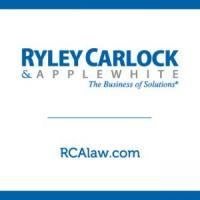On December 18, 2019, The National Labor Relations Board (the “NLRB”) published a final rule in the Federal Register that rolls back some landmark Obama-era regulations. In early 2015, the NLRB adopted the “quickie election” rules. The 2015 regulations made it easier for unions to organize unrepresented employees by shortening the time between a union’s filing of a representation petition and holding an election, and allowed for an election petition in as little as 23 days. The newly published rule modifies and extends that period substantially, to no less than 78 days.
Effective on April 16, 2020, the modifications provide employers and unrepresented employees “additional time to comply with various pre-election requirements instituted in 2015,” while simultaneously ensuring an adequate and fair “opportunity for litigation and resolution of unit scope and voter eligibility issues prior to an election.”1 In other words, employers will have a better opportunity to protect their business interests, educate employees about union representation, and reduce the threat of unionization.
Key takeaways and changes include:
Pre-Election Hearing
Under the current, quickie election rules, the Pre-Election Hearing is generally scheduled to begin eight calendar days from the Notice of Hearing. The new changes extend this to 14 business days. This will add over a week and a half to the current timeline, allowing employers a greater opportunity to prepare an adequate response to the union’s organization efforts. The new rules also allow employers and unions to litigate voter eligibility, including supervisory status, at the Pre-Election Hearing, which should help clarify and resolve which employees are eligible to vote before an election occurs. Moreover, employers will now have five business days, instead of just two, to post and distribute the Notice of Petition for Election.
Statement of Position
The Board retained the Statement of Position requirements for employers while easing the burden and requiring unions to file a written response before the Pre-Election Hearing. Under the current rules, an employer has to provide its Statement of Position by noon the day before the hearing was to begin, i.e., within seven days after service of the Notice of Hearing. Now, employers will have a minimum of eight calendar days to research, prepare, file, and serve a Statement of Position. Additionally, the union will be required to file a written response to the employer’s Statement of Position within three days before the hearing, as opposed to the oral response that is allowed under the current rules. Another slight change to the Statement of Position requirements is that the Statement can now be amended by the employer upon a showing of good cause. Under the current rules, any issue not raised in the Statement of Position is waived by the employer.
Post-Hearing Briefs
The Board also restored the right of parties to file a post-hearing brief. Parties will no longer be required to get special permission to file a post-hearing brief but may do so as a matter of regular practice within five business days of the close of the hearing. Additionally, hearing officers may grant an extension of up to 10 business days for good cause.
Election Timing
Upon getting direction from the NLRB to hold an election, the rules require an election be held as soon as practicable. But under the new rules, there will be a normal waiting period of 20 days before that election can be held. This will allow employers, employees, and unions a greater opportunity to express their views during the campaign.
Voter List
Under the new rules, the NLRB will ease the burden on compiling voter lists and take steps to protect employee information. An employer will now have five business days to furnish a voter list, instead of only two business days. But for the time being, despite acknowledging that the 2014 amendments contained “controversial aspects…including the contents of the voter list,” the Board deferred on making changes to the content requirements until future proceedings.2
Requests for Review
While a Request for Review can be filed at any time, including after an election, if an employer files a Request for Review within 10 days of the direction of election, the ballots will be impounded and held pending Board review. Moreover, regional directors will no longer certify election results if a request for review is pending, even if filed after the election. So the entire election process may run its course before an employer is obligated to bargain; this is a significant improvement over the quickie election rules that often led employers to bargain with a union despite pending appeals.
Conclusion
These rule changes will give employers a better chance to address unionization activities and will go a long way to restoring an employer’s ability to react and respond in an appropriate manner to an election. However, there is a caveat: because the rules do not go into effect until mid-April 2020, there may be increases in organizing activity as unions scramble to organize unrepresented employees under the current quickie election rules. Nonetheless, upon implementation, employers will be better situated to fully consider and litigate issues relating to the proposed bargaining unit, and ultimately help restore an equal playing field between employers and unrepresented employees.




 />i
/>i
